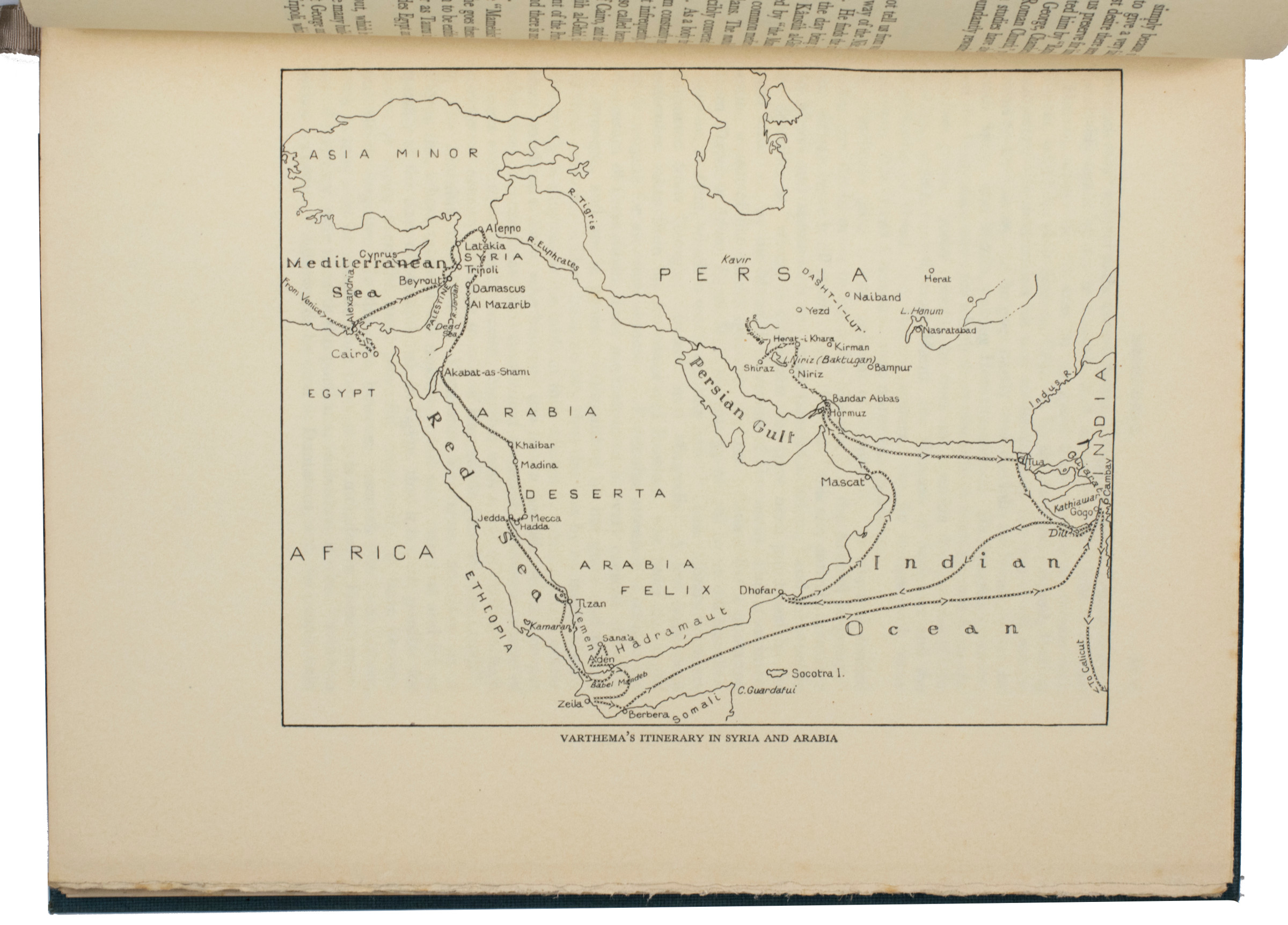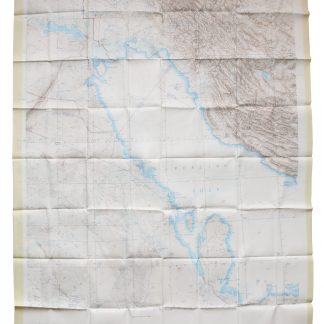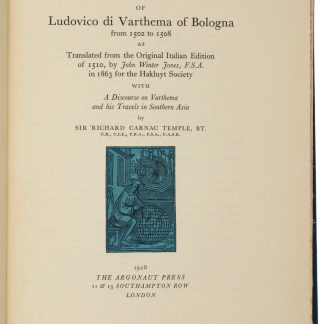English edition of the first account of a European travelling through the Middle East, visiting Mecca and Medina, to Persia, India, and the East Indies
The itinerary of Ludovico di Varthema of Bologna from 1502 to 1508 as translated from the original Italian edition of 1510, by John Winter Jones, F.S.A. in 1863 for the Hakluyt Society with a discourse on Varthema and his travels in Southern Asia by Sir Richard Carnac Temple [...].
4to. LXXXV, (1 blank), 121, (3) pp. With 5 maps, the facsimile text of the title-page and colophon of Varthema's original 1510 book, 1 plate, and a small blue illustration (similar to the blind-tooled image on the front board) on the title-page. Text set in Monotype Baskerville. Half white and half blue cloth with gold lettering on spine and a blind-tooled image (probably of Varthema) on the front board.
€ 500,00
Ludovico di Varthema (ca. 1468-1517) was one of the first Europeans to visit the cities of Mecca and Medina and to travel as far east as India and the East Indies. He probably came from Bologna or possibly from Rome and might have been a soldier in the Papal forces, but not much is known about his early life. Due to Varthema's writing and later publishing his travel account, much more is known about his later years: in 1802 he sailed from Venice via Cairo in Egypt to Damascus in Syria, where he embarked upon his first remarkable journey. He joined a pilgrimage to Mecca and Medina, being one of the first Europeans to enter these holy cities, and then continued south through the Arabian Peninsula to Yemen. From Aden in Yemen he sailed to several cities on the coast of Somalia before sailing along the coast of Oman to Ormuz and subsequently travelling inland across Persia to India. Varthema supposedly travelled across large parts of the East Indies, but since his descriptions of this part of his journey lose some of its accuracy, scholars doubt whether he made the journey himself. Nonetheless, the itinerary shows that the journey that far to the East was not impossible or unheard of at the beginning of the 16th century.
Varthema's Itinerary was first published in Rome in 1510, and numerous editions have been published since. Almost immediately after its first publication the work was translated into Latin (1511), and numerous translations into other languages followed. In 1863 the Hakluyt Society published the principal English translation of the original Italian work, by John Winter Jones. In the present edition, prepared by Norman Mosley Penzer, an extensive analysis of Varthema and his travels by Richard Carnac Temple has been added to Jones's translation. Temple (1850-1931) was an Indian-born British administrator and an anthropological writer. He was a member of several learned societies and institutes, including the Royal Asiatic Society, the Royal Anthropological Institute, and the Hakluyt Society. Penzer (1892-1960) was a British scholar specialising in Oriental studies and a fellow of the Royal Geographical Society.
Binding slightly soiled, edges foxed and untrimmed. With a pink reading ribbon and a small blue label on the back pastedown: "Vancouver Bookshop 909 Robson Street Vancouver, B.C.". Printed on Japon vellum, one of 975 copies but unnumbered.
Howgego I, V15. cf. Blackmer 338; Gay, Afrique et Arabie, 140; Macro 2239.









